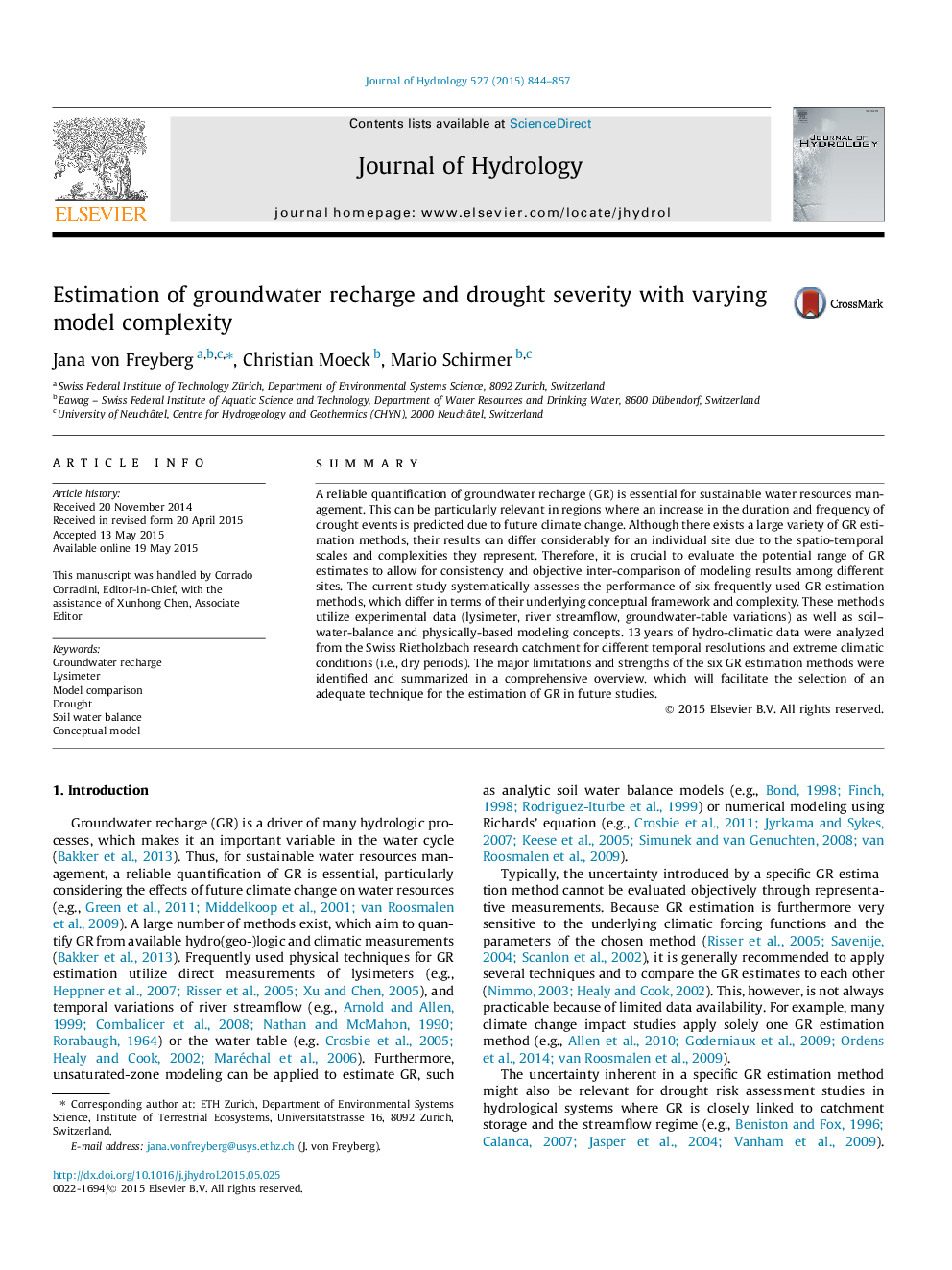| Article ID | Journal | Published Year | Pages | File Type |
|---|---|---|---|---|
| 6411195 | Journal of Hydrology | 2015 | 14 Pages |
â¢Six frequently used methods for groundwater recharge estimation were compared.â¢Methods represent different spatio-temporal scales and degrees of complexity.â¢Considerable differences among the methods even after calibration to lysimeter data.â¢Increasing model complexity not necessarily leads to better model performance.â¢Strengths and limitations of the methods are compiled and recommendations are made.
SummaryA reliable quantification of groundwater recharge (GR) is essential for sustainable water resources management. This can be particularly relevant in regions where an increase in the duration and frequency of drought events is predicted due to future climate change. Although there exists a large variety of GR estimation methods, their results can differ considerably for an individual site due to the spatio-temporal scales and complexities they represent. Therefore, it is crucial to evaluate the potential range of GR estimates to allow for consistency and objective inter-comparison of modeling results among different sites. The current study systematically assesses the performance of six frequently used GR estimation methods, which differ in terms of their underlying conceptual framework and complexity. These methods utilize experimental data (lysimeter, river streamflow, groundwater-table variations) as well as soil-water-balance and physically-based modeling concepts. 13Â years of hydro-climatic data were analyzed from the Swiss Rietholzbach research catchment for different temporal resolutions and extreme climatic conditions (i.e., dry periods). The major limitations and strengths of the six GR estimation methods were identified and summarized in a comprehensive overview, which will facilitate the selection of an adequate technique for the estimation of GR in future studies.
